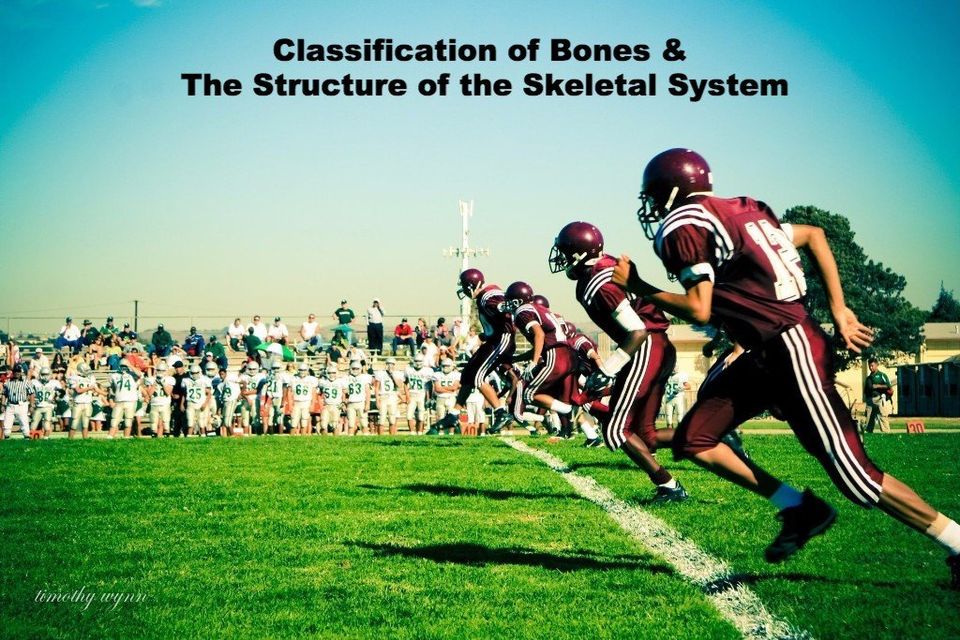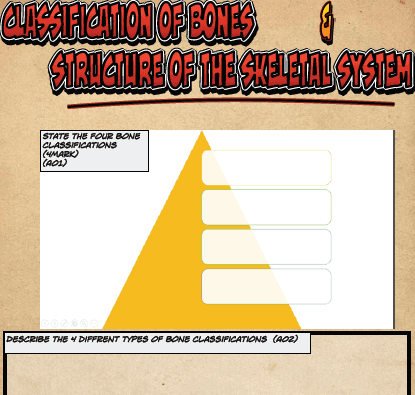
Flip Learning Video - Master the content
Watch the Flip learning video and become a master of the content.
By the end of the video you should be able to:
Identify:
The 4 classifications of Bones
Explain:
The different bones in relation to the classifications
The different types of bones in relation to movement
Apply:
Your knowledge of the skeletal system to complete a range of exam questions covering the A01-A03 banding
Work Booklet
Revisiting this topic?
- Watch the Flip learning video
- Print out the work booklet
- Fill in the various subheadings
- Completing the assessment sheet (RAG)
To print out the PDF
Click download file
Once the file is downloaded you will be able to print.
In Lesson Presentation
In lesson Presentation - Focus on exam questions
Use paper and pen to answer the questions asked within the lesson Prezi
To access the presentation
- click the image to the left
- once on the Prezi website, use the left and right arrows to fly around the presentation
Assessment Sheet - RAG
Assess were you are at for this topic.
Evaluate how you feel you are before and after doing the following:
- Watched the YouTube video
- Completed the YouTube video
- Completed the exam question (lesson presentation)
To print out the PDF
- Click download file
- Once the file is downloaded you will be able to print.

